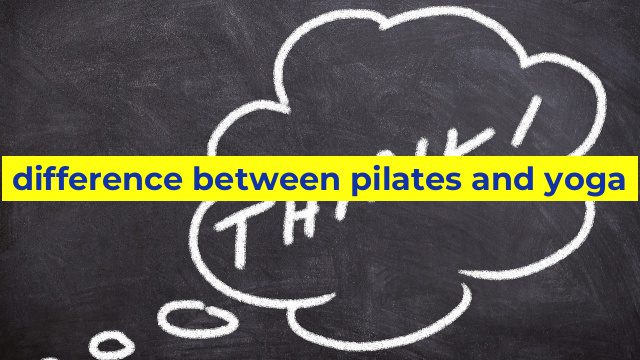The Differences Between Pilates and Yoga
When it comes to mind-body exercises, two of the most popular forms are Pilates and yoga. While they share some similarities, there are several key differences between the two disciplines that set them apart.
Origins
One of the main differences between Pilates and yoga is their origin. Yoga has been practiced for thousands of years in India, and is deeply rooted in Hinduism and Buddhism. On the other hand, Pilates was developed in the early 20th century by Joseph Pilates, who created the exercise system to help injured soldiers and dancers recover from injuries.
Movement Focus
Both Pilates and yoga emphasize controlled movements and coordinated breathing, but the focus on movement is different. Yoga poses, or asanas, are often held for several breaths and focus on stretching and flexibility. Pilates movements, or exercises, are designed to build strength, flexibility, and endurance through controlled movements and static holds.
Equipment and Props
Another difference between Pilates and yoga is the use of equipment and props. While yoga often uses props like blocks, bolsters, and straps to help practitioners achieve proper alignment and support, Pilates commonly uses specialized equipment like reformers, Cadillac, and barrels to enhance resistance and challenge.
Philosophy and Spirituality
Yoga is often seen as a spiritual practice, with a strong emphasis on meditation and mindfulness, while Pilates is more focused on physical fitness and rehabilitation. While both forms of exercise can be deeply satisfying and rejuvenating, they serve different purposes and may appeal to different people for those reasons.
In summary, while Pilates and yoga share some similarities, they have distinctive differences in their origins, movement focus, equipment and props, and philosophy and spirituality. Both disciplines offer various health benefits, but it is important to choose one that aligns with your personal goals and preferences.
Table difference between pilates and yoga
| Aspect | Pilates | Yoga |
|---|---|---|
| Origin | Developed in the 1920s by Joseph Pilates in Germany to improve physical strength and flexibility | Originated in ancient India and focuses on spiritual, mental and physical well-being through various asanas (poses) |
| Primary Focus | Core strength, posture, balance, and body awareness | Spiritual, emotional and physical health, and flexibility |
| Class Structure | Structured classes with distinct exercises targeting specific muscles or groups of muscles. Usually performed on the mat or with equipment such as the Reformer or Cadillac. | Varied classes with a focus on breathing, meditation and relaxation techniques. |
| Breathing | Emphasis on lateral breathing, which engages the diaphragm and deep core muscles | Emphasis on deep belly breathing, which calms the mind and relaxes the body |
| Equipment | Uses specialized equipment like the Pilates Reformer, Cadillac, and Ladder Barrel | Uses traditional equipment like yoga mats, blocks, and straps |
| Intensity | Can be high-intensity depending on the level and type of Pilates practiced | Varies from restorative to vigorous, depending on the teacher and the type of yoga |
| Benefits | Improved posture, flexibility, balance, core strength, and injury prevention. | Reduced stress, improved flexibility, balance, strength, and mental clarity. |
